Junkyard Gem: 1972 Mercury Cougar XR-7

Starting with the 1939 model year and continuing through 2011, the rule in Dearborn was that most Ford models would get a dressed-up sibling wearing Mercury badges (and Canadians even got Mercury F-100s and Econolines). When the Mustang first hit showrooms in 1964, the countdown for a Mercurized version began. That car, the Cougar, debuted as a 1967 model marketed as “the man’s car.” Today’s Junkyard Gem is a much-abused example of the early-1970s Cougar, found in a San Francisco Bay Area car graveyard a while back.
Just as the Mustang packed on weight and price as the 1960s became the 1970s, the even more heavily gingerbreaded Cougar did the same. For 1971 through 1973, the Cougar was still based on the Mustang chassis but weighed several hundred additional pounds and was more than seven inches longer. The curb weight for this car was 3,298 pounds, versus 2,941 pounds for the lightest ’72 Mustang coupe.
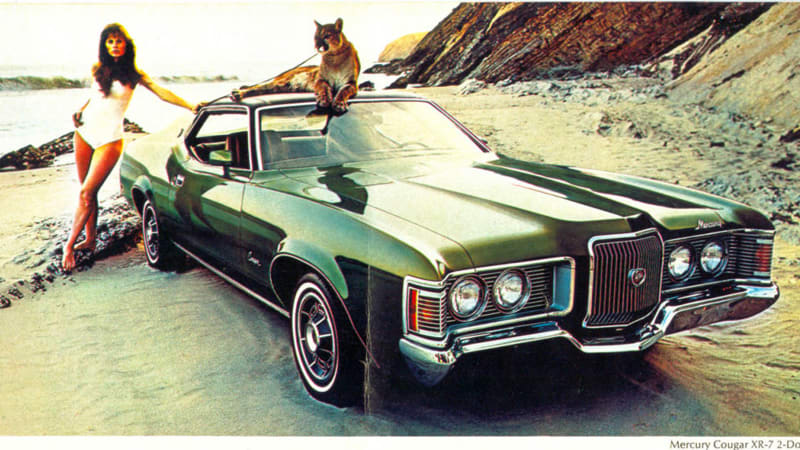
Yes, there’s a Mustang underneath all that chrome! When the Mustang went to a modified Pinto chassis starting in the 1974 model year, the Cougar moved over to the midsize Torino platform and stayed there until it rejoined the Mustang on the Fox platform for 1980 (though the honor of being the Mustang’s near-twin went to the Mercury Capri at that point). For 1989, the Cougar became an MN12 Thunderbird sibling, where it remained through its 30th anniversary … and then the Cougar got the axe. The Cougar story wasn’t done at that point, however, because the name got revived in 1999 with a Mondeo-based version that lasted through 2002 and bears the distinction of being one of the few Mercury models with no corresponding Ford-badged counterpart.
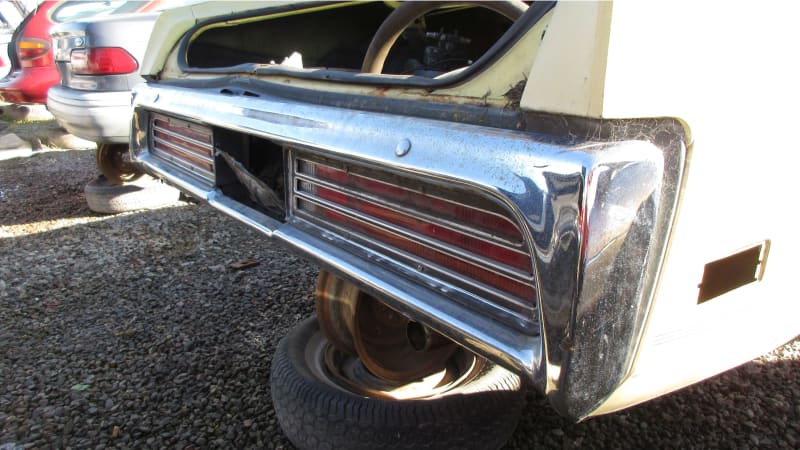
Along the way, there were Cougar sedans and even station wagons, with the curb weight of the heaviest-ever Cougar bloating to well over two tons (the winner of that honor is the 1977 Cougar Villager wagon, scaling in at an astounding 4,482 pounds). In 1972, though, all new Cougars were coupes or convertibles, and all of them came with factory V8 power.
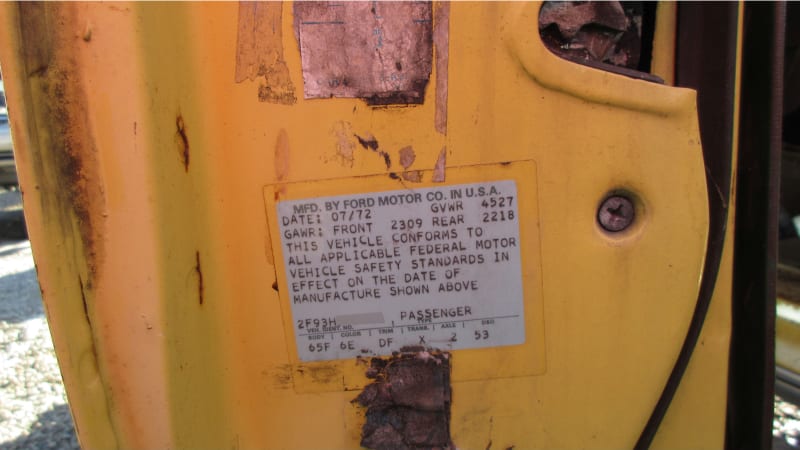
The build tag on this one tells us that it was assembled at the River Rouge compound in Dearborn and sold via the Kansas City sales office. That tells us that someone drove this car to California after buying it in the Midwest; Ford also built 1972 Cougars in San Jose, so California Mercury shoppers would have bought locally-produced ones. It’s a top-end XR-7 in Medium Bright Yellow paint, with the interior in Medium Ginger.
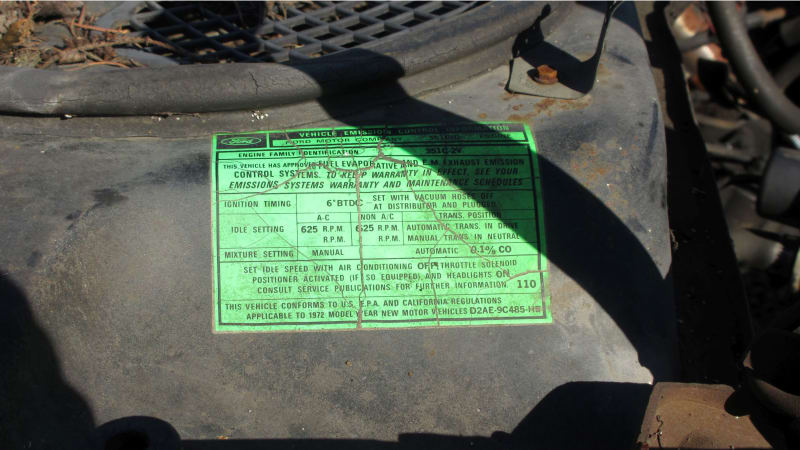
The engine was gone when I got there, but this sticker tells us it was a 351-cubic-inch (5.8-liter) Cleveland V8 with two-barrel carburetor, rated at 163 net (not gross) horsepower. Junkyard shoppers still grab 351C engines soon after they hit a yard’s inventory.
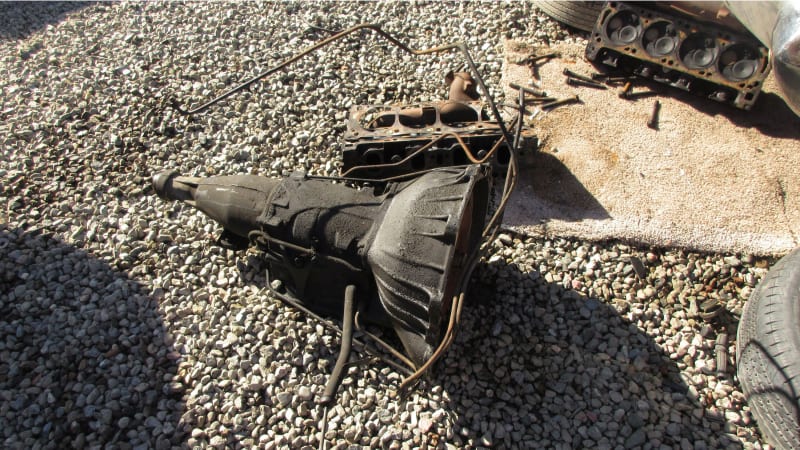
The build tag specified the transmission as a three-speed FMX automatic, and the engine pullers left it behind. A three-speed manual was the base transmission.
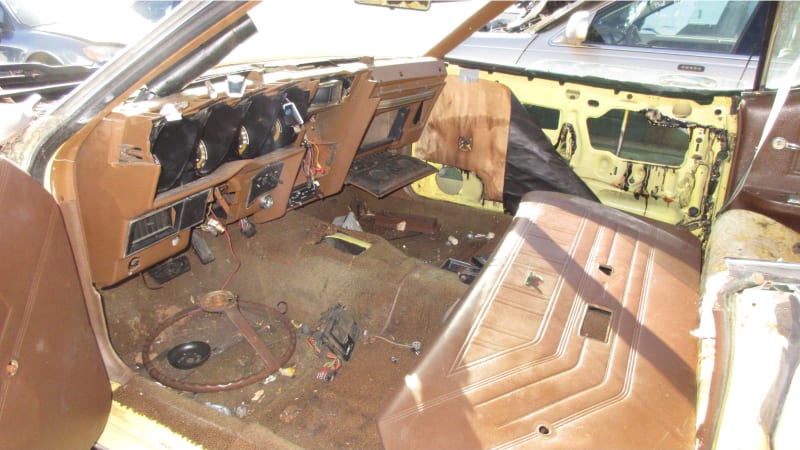
The interior got picked nearly clean by boneyard scavengers.
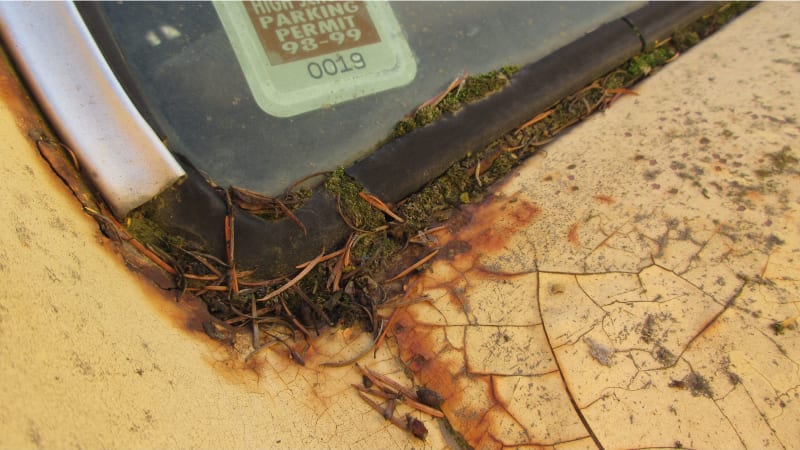
There’s a late-1990s parking sticker from Pioneer High School in San Jose, and the kind of body rust California cars often got around window trim.
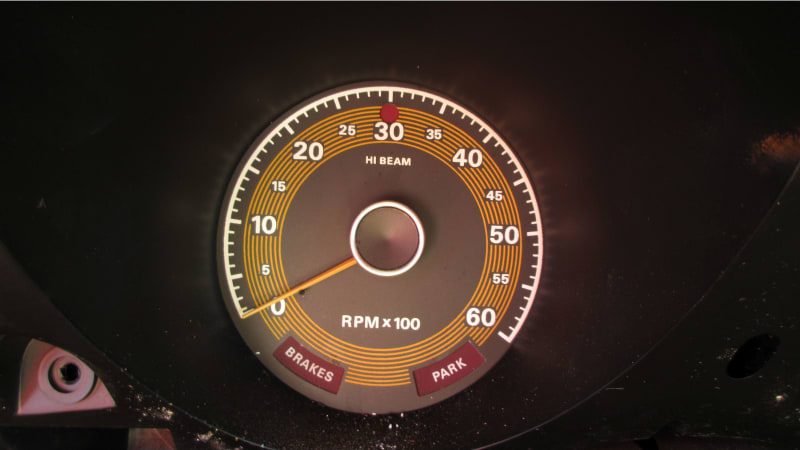
The list price on this car was $3,323, or about $23,997 in 2022 dollars. This was nearly as costly as the most expensive 1972 Mercury Montego, the GT.

A 1967-1970 Cougar in this condition might have been worth restoring, but there wasn’t much hope for this car once it entered the junkyard ecosystem.
Civilized like an elegant woman, savage (MEOW!) like a cat. I always feel bad for the leashed-up (and probably drugged) big felines in Cougar commercials of the 1970s.





